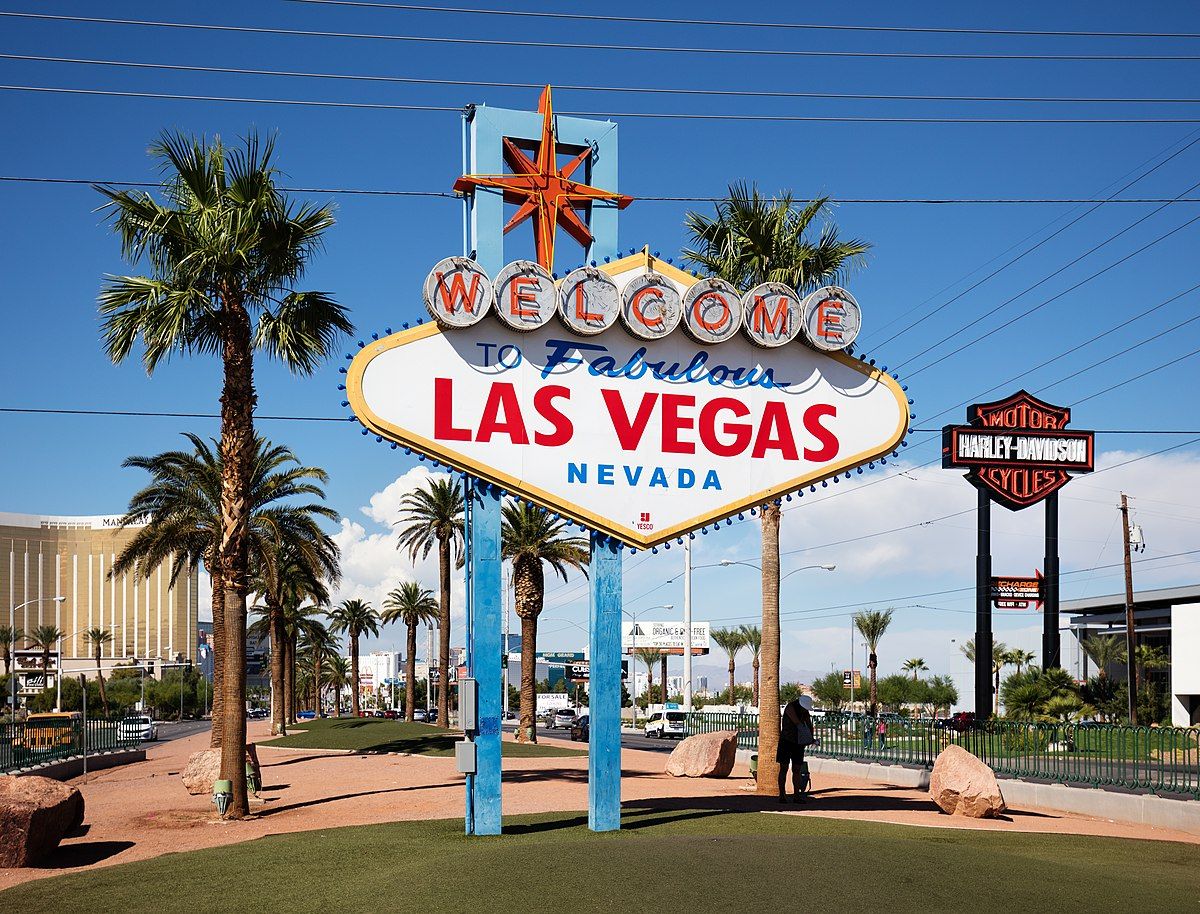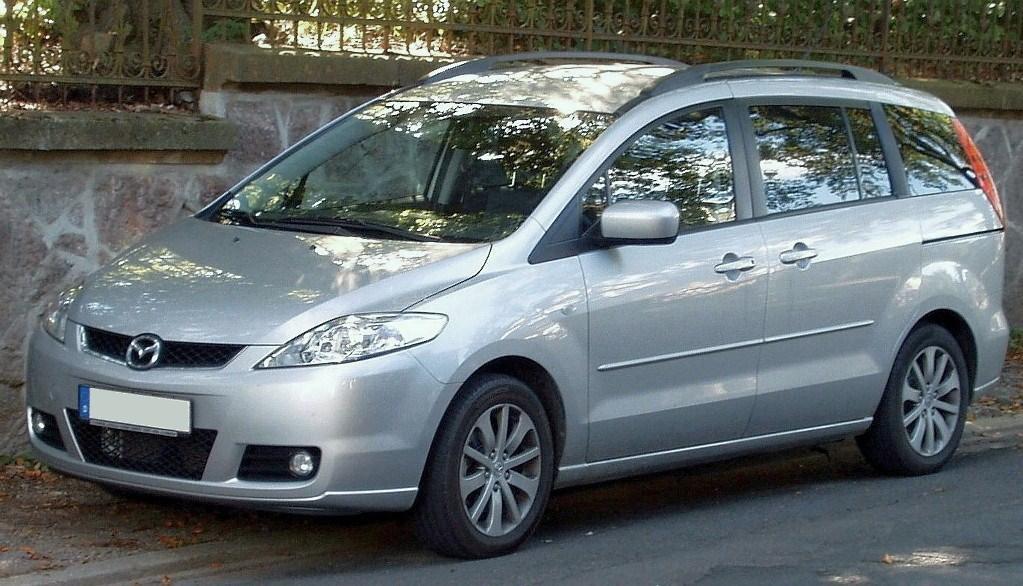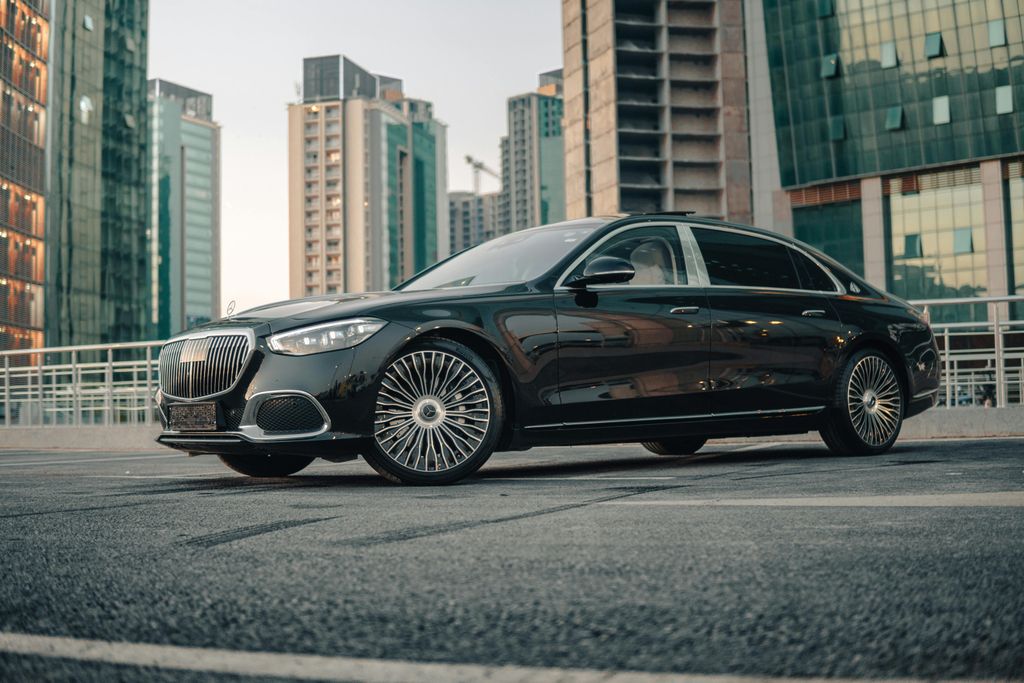
The allure of a luxury vehicle is undeniable. From their plush interiors and advanced technology to their powerful engines and prestigious badges, these machines promise an elevated driving experience. Yet, for many consumers, the dream of luxury ownership can quickly turn into a financial headache, especially when it comes to trade-in value.
While luxury SUVs and sedans are celebrated for their initial comfort and sophisticated features, not all maintain their worth over time. A significant number lose value at an alarming rate, transforming them into less-than-ideal investments for those who plan to sell or trade them in later. This rapid depreciation can stem from a variety of factors, including high maintenance costs, quickly outdated technology, or a diminished demand in the used car market.
Many luxury models experience a steep drop in value within just a few years of ownership, with some losing nearly half their original price after three to five years. This phenomenon, while frustrating for original buyers, also creates unique opportunities for savvy consumers looking to acquire a high-end vehicle at a significantly reduced price. Understanding which models depreciate the fastest is crucial for making informed decisions, whether you are seeking a bargain or aiming to avoid a costly financial pitfall. This in-depth analysis will spotlight some of the luxury vehicles most notorious for their rapid depreciation, detailing the specific reasons behind their value erosion and what this means for both new and prospective used car owners.
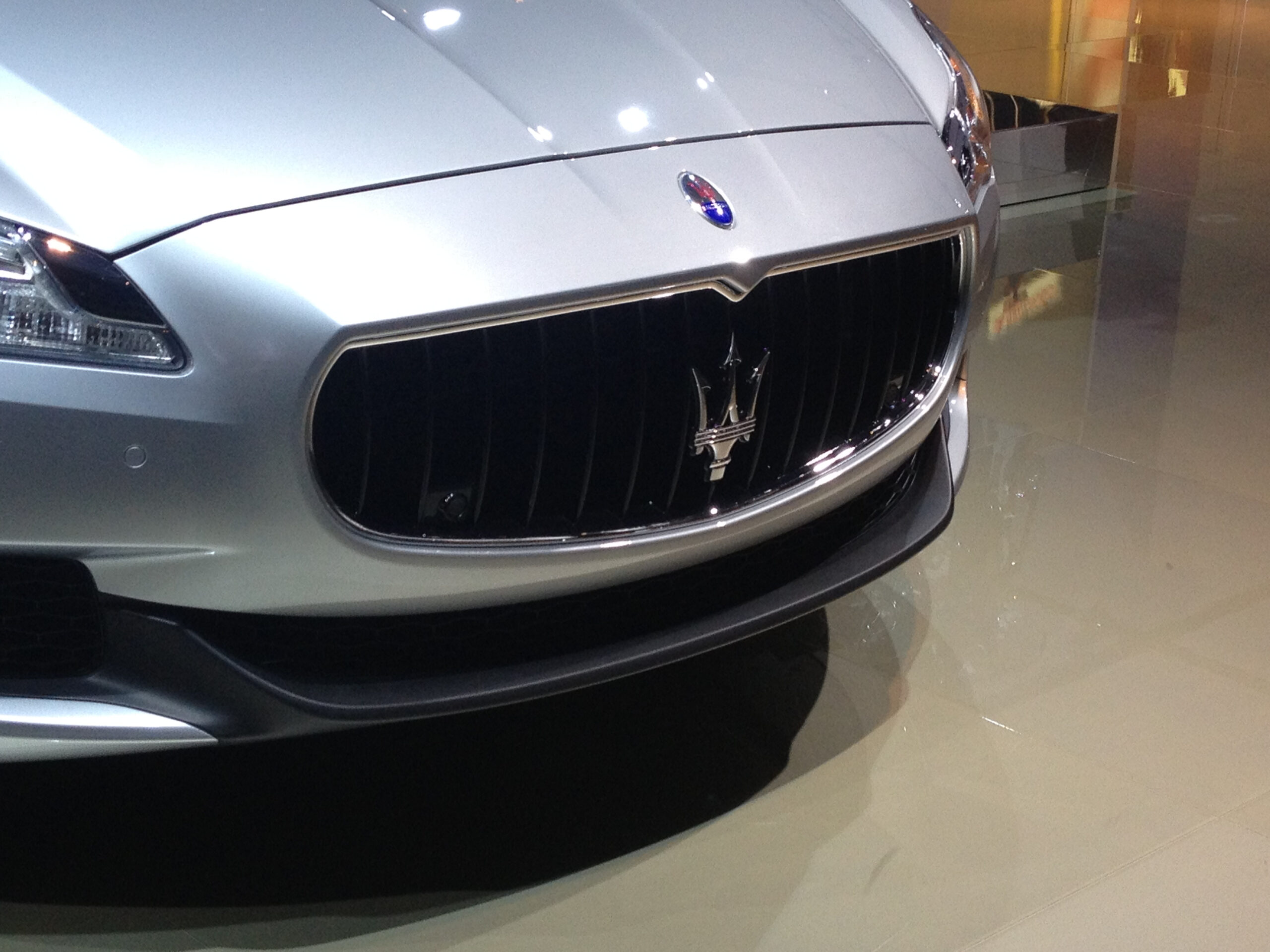
1. **Maserati Quattroporte**
Maserati is renowned for crafting stylish and exotic cars that exude a distinct Italian flair. However, the Quattroporte, despite its undeniable presence, struggles significantly with value retention. It stands out by ranking first on a list of vehicles with the highest five-year depreciation, losing a remarkable 64.5% of its value. This substantial loss can be attributed to several factors, including its elevated starting price, an interior quality that is often perceived as average for its segment, and persistent concerns regarding its reliability.
The Maserati Quattroporte is equipped with a twin-turbo 3.0-liter V6 engine, capable of producing 424 horsepower and 406 lb-ft of torque. This powerful engine is seamlessly paired with an eight-speed automatic transmission, channeling its output through an all-wheel-drive system. Such a powertrain enables the car to accelerate from 0 to 60 mph in a swift 4.3 seconds and reach an impressive top speed of 179 mph, firmly establishing its credentials as a strong performer in its class.
For the 2024 model year, Maserati streamlined the Quattroporte lineup to a single, well-appointed trim level: the Modena Ultima. This model comes loaded with luxury features designed to enhance comfort and connectivity, including heated and ventilated front seats, heated rear seats, a Harman Kardon premium sound system, GPS navigation, and comprehensive smartphone compatibility. However, its high price tag, starting at $139,000, places it in direct competition with formidable rivals such as the BMW 7 Series, Porsche Panamera, and Genesis G90, making it challenging for the Quattroporte to compete solely on value.
A significant disappointment for loyal Maserati enthusiasts was the decision to remove the Ferrari-derived V8 engine, which had previously been a major draw for older models. Without the distinctive power and prestige of the V8, the Quattroporte loses a notable part of its unique appeal. This prompts potential buyers to consider other luxury options that might offer better overall value, more advanced technology, and a stronger track record of reliability, further impacting the Quattroporte’s market position.
While the Maserati Quattroporte undoubtedly offers exotic styling, solid performance, and a generous array of standard features, it comes with several notable drawbacks. These include its availability in only one expensive trim, a prohibitive six-figure price tag, and the necessity for costly maintenance. When these factors are combined with its documented history of reliability issues, the Quattroporte becomes a particularly risky investment for long-term ownership, contributing significantly to its steep depreciation curve.
Car Model Information: 2012 Maserati Quattroporte S
Name: Maserati Quattroporte
Caption: Maserati Quattroporte VI
Manufacturer: Maserati
Production: 1963–1969,1971,1974–1990,1994–2001,2003–2012,2013–2023
Assembly: Modena,Grugliasco,Turin
Class: Full-size luxury car
BodyStyle: Sedan (car)
Sp: uk
Categories: 1970s cars, 1980s cars, 1990s cars, 2000s cars, 2010s cars
Summary: The Maserati Quattroporte (Italian pronunciation: [ˌkwattroˈpɔrte]) is a four-door full-size luxury sedan produced by Italian automobile manufacturer Maserati. The name translated from Italian means “four doors”. The production of the sixth generation ended in late 2023, with the first generation introduced in 1963.
Get more information about: Maserati Quattroporte
Buying a high-performing used car >>>
Brand: Maserati Model: Quattroporte
Price: $12,980 Mileage: 82,851 mi.
Read more about: Driving These 20 Cars? Here’s What People Secretly Think About You
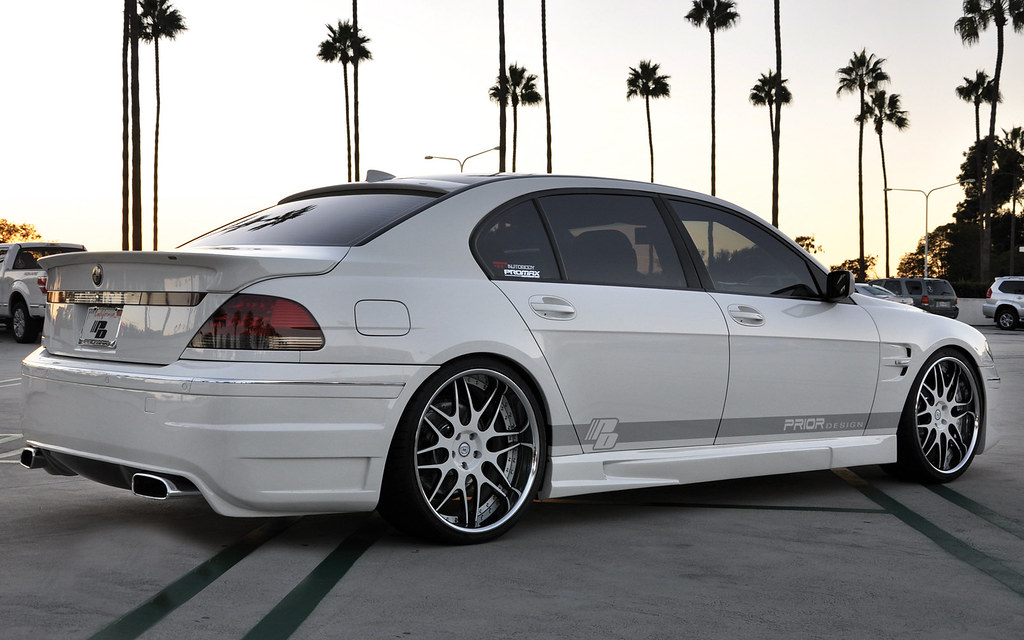
2. **BMW 7 Series**
As BMW’s flagship luxury sedan, the 7 Series is celebrated for its elegant design, state-of-the-art technology, and potent performance capabilities. It consistently delivers a remarkably smooth and comfortable ride, positioning it as a premier choice for discerning individuals who seek an exceptional driving experience. Despite its myriad impressive attributes, the 7 Series experiences rapid value erosion, evidenced by a five-year depreciation rate of 61.8%, making it a significant concern for those focused on resale value.
One of the primary drivers behind this substantial depreciation is the vehicle’s high starting price, which escalates considerably with the addition of optional features and upgrades. While the base model typically remains just under the six-figure mark, opting for advanced technology packages and higher trim-level enhancements can easily push the total cost well beyond $100,000. This elevated initial investment makes the 7 Series particularly susceptible to depreciation when compared to its key luxury rivals.
Another significant factor contributing to its diminished resale value is BMW’s historical association with reliability concerns. The 7 Series, consistent with many high-end luxury automobiles, is inherently expensive to maintain and repair. Over the course of ownership, these costs accumulate, rendering long-term possession less attractive in the competitive used car market. Consequently, prospective buyers often gravitate towards vehicles with lower projected maintenance expenses, which further exacerbates the 7 Series’ depreciation.
The BMW 7 Series offers a selection of three distinct powertrain options, catering to varied performance preferences. The 740i variant is powered by a turbocharged 3.0-liter six-cylinder engine, generating 375 horsepower. For those seeking efficiency combined with power, the 750e xDrive is a plug-in hybrid model boasting 483 horsepower. At the pinnacle of the lineup, the 760i xDrive features a turbocharged 4.4-liter V8 engine, delivering an impressive 536 horsepower. All models are equipped with an eight-speed automatic transmission, ensuring robust acceleration and refined power delivery.
Luxury is a definitive hallmark of the 7 Series experience, characterized by premium materials, sumptuous heated seats, sophisticated ambient lighting, and advanced infotainment systems. The top-tier trim levels further elevate the experience with features like ventilated seats and high-end audio systems. However, despite its extensive list of advantages, the overall cost of ownership remains high due to expensive repairs and the fact that many desirable driver-assist features are offered as costly optional add-ons rather than standard inclusions, contributing to its value challenges.
Car Model Information: 2019 Subaru Forester Premium
Name: BMW 7 Series
Caption: BMW 7 Series (G11)
Manufacturer: BMW
Production: 1977–present
Class: Full-size car,luxury car
BodyStyle: sedan (car)
Predecessor: BMW New Six
Categories: All articles with dead external links, Articles with dead external links from July 2021, Articles with short description, BMW vehicle series, CS1 Chinese-language sources (zh)
Summary: The BMW 7 Series is a full-size luxury sedan manufactured and marketed by the German automaker BMW since 1977. It is the successor to the BMW E3 “New Six” sedan and is now in its seventh generation.
The 7 Series is BMW’s flagship car and is only available in a sedan bodystyle (including long wheelbase and limousine models). It traditionally introduces technologies and exterior design themes before other models in BMW’s lineup.
The first generation of the 7 Series was powered by straight-6 petrol engines, and following generations have been powered by inline-4, straight-6, V8 and V12 engines with both natural aspiration and turbocharging. Since 1995, diesel engines have been optional in the 7 Series.
Unlike the BMW 3 Series and BMW 5 Series sedans, BMW does not offer a full M model, but once offered an M performance variant, the BMW M760 with its 6.6L V12 (at the time the most powerful BMW ever made, not to be confused with BMW 760 6.6 V12 which does not offer the same performance). The Alpina B7 served as the high-performance variant of the 7 Series.
Get more information about: BMW 7 Series
Buying a high-performing used car >>>
Brand: BMW Model: 7 Series
Price: $21,123 Mileage: 53,226 mi.
Read more about: Nightmare in the Driveway: 10 SUVs Dealers Say They Can’t Move Due to Lingering Issues
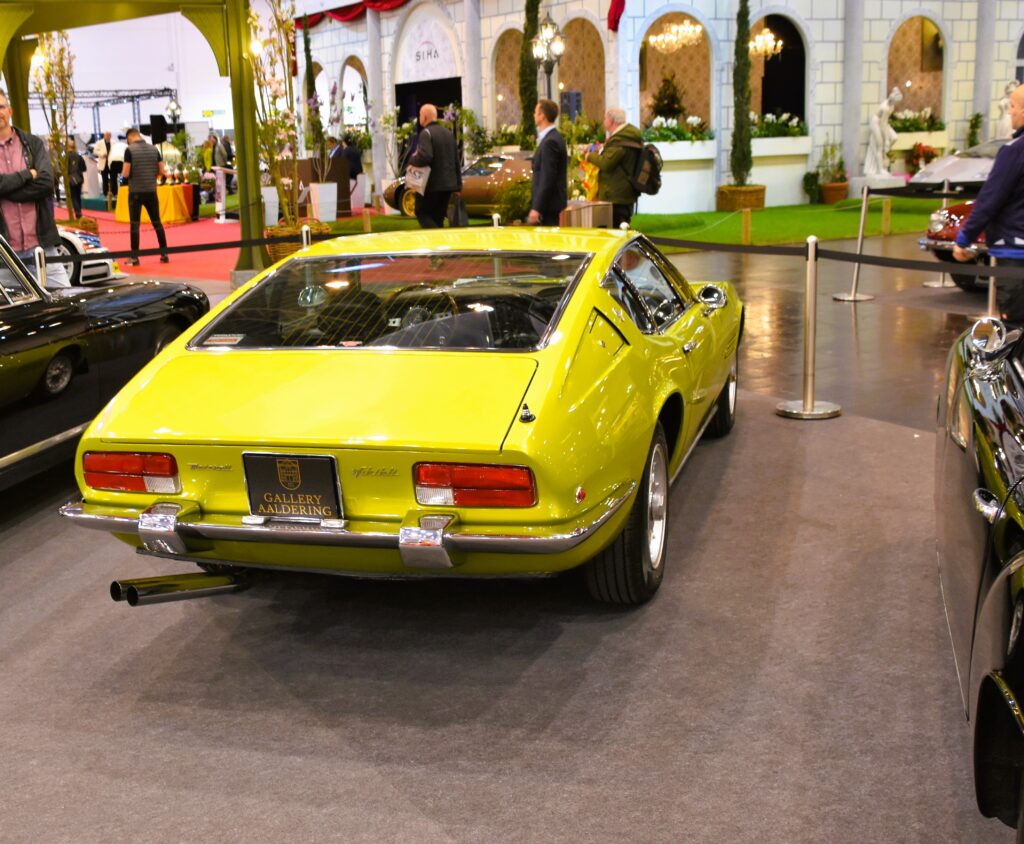
3. **Maserati Ghibli**
The Maserati Ghibli presents itself as a stylish Italian luxury sedan, yet it consistently struggles to retain its value over time. With a five-year depreciation rate of 61.3%, the Ghibli sheds its value rapidly, positioning it among the worst performers in its class for resale. This precipitous decline in price is primarily a consequence of its high original Manufacturer’s Suggested Retail Price (MSRP), an interior quality often considered average for the luxury segment, and a history marred by poor reliability.
One of the most pressing concerns surrounding the Ghibli is its pricing relative to its competitors. While it commands a high starting price, it frequently falls short of delivering the same level of luxury or reliability that is expected from other premium sedans in its category. Despite its undeniably elegant exterior design, the interior often fails to meet the lofty expectations set by its cost. Many cabin components are noticeably shared with more affordable models, which detracts from the perceived luxury that its price tag implies.
Despite these perceived drawbacks, the Ghibli maintains a strong and compelling presence on the road. It offers a choice of two potent engine options: a turbocharged 3.0-liter V6, which delivers between 345 and 424 horsepower, and a more robust turbocharged 3.8-liter V8, churning out 580 horsepower. Both engine configurations are mated to an eight-speed automatic transmission, with the V8 model boasting impressive acceleration, capable of reaching 0-60 mph in a mere four seconds.
While the Ghibli’s interior may not be universally lauded as the best in class, it does incorporate several desirable luxury features. The base GT trim, for instance, includes comfortable leather seats, power-adjustable front seats, a heated steering wheel, and wireless connectivity. Furthermore, it is equipped with a commendable array of driver assistance and safety features. However, a common critique revolves around the rear seats, which are often described as somewhat cramped, potentially limiting comfort for passengers on longer journeys.
For consumers contemplating a luxury sedan, acquiring a used Ghibli often proves to be a more financially prudent decision. Pre-owned models frequently sell for significantly less, typically in the range of $20,000 to $30,000, a substantial reduction from their original price. However, it is imperative to acknowledge that the costs associated with maintenance and repairs can still be considerable, making long-term ownership potentially expensive. As one insight aptly puts it, “Each time you press the start button and hear that distinctive engine note, remember you’re experiencing approximately $100 of depreciation with every hour of driving—making this perhaps the most expensive form of automotive therapy available.”
Car Model Information: 2014 Maserati Ghibli Base
Name: Maserati Ghibli
Caption: 2018 Maserati Ghibli GranLusso
Manufacturer: Maserati
Assembly: Modena,Grugliasco,Turin
Class: Grand tourer,Executive car
BodyStyle: fastback,coupé,Roadster (automobile),Sedan (automobile)
Production: AM115: 1967–1973,AM336: 1992–1998,M157: 2013–2023
Categories: 1970s cars, 1990s cars, 2010s cars, Articles with short description, CS1 Italian-language sources (it)
Summary: Maserati Ghibli is the name of three different cars produced by Italian automobile manufacturer Maserati: the AM115, a V8 grand tourer from 1967 to 1973; the AM336, a V6 twin-turbocharged coupé from 1992 to 1998; and the M157, an executive saloon from 2013 to 2023.
Ghibli is the Libyan Arabic name for the hot dry south-westerly wind of the Libyan desert.
Get more information about: Maserati Ghibli
Buying a high-performing used car >>>
Brand: Maserati Model: Ghibli
Price: $10,980 Mileage: 83,121 mi.
Read more about: The Resale Reality Check: 14 Cars That Plummeted in Value After Just Five Years
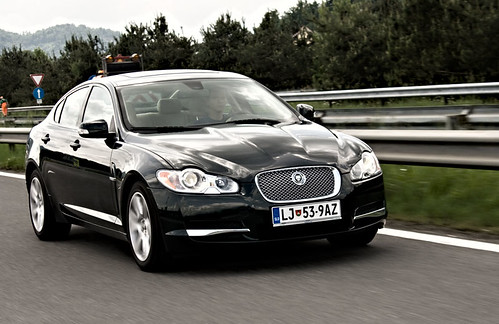
4. **Jaguar XF A Luxury Sedan with Weak Resale Value**
The Jaguar XF is a distinguished British luxury sedan that consistently delivers a smooth and exceptionally comfortable driving experience. Its design, characterized by bold yet refined lines, makes it an appealing option for those who favor a more understated approach to luxury. Despite its inherent charm and sophistication, the XF struggles significantly with value retention, exhibiting a five-year depreciation rate of 57.6%.
One of the primary contributors to this substantial depreciation is Jaguar’s comparatively weaker brand recognition when pitted against established titans like BMW and Mercedes-Benz. Many potential buyers perceive the XF’s styling as overly subtle, lacking the overt flashiness or immediate recognition that competing luxury sedans often possess. This perception has led to a noticeable reduction in demand within the used car market, consequently making the XF available at a considerable discount after just a few years of ownership.
Beneath the elegant hood, the Jaguar XF offers a choice of two distinct engine options, both being turbocharged 2.0-liter four-cylinder engines. The P250 variant is engineered to produce 246 horsepower and is paired with a rear-wheel-drive system. The more powerful P300, on the other hand, delivers 296 horsepower and features an all-wheel-drive system. Both models are equipped with an eight-speed automatic transmission, which ensures a balanced amalgamation of performance and fuel efficiency. While the XF may not rival the raw power of some sports-oriented luxury sedans, it consistently provides a refined and comfortable ride.
Inside, the Jaguar XF boasts a meticulously well-appointed cabin, featuring premium materials and a suite of modern technological amenities. Standard inclusions comprise supple leather seats, elegant ambient lighting, an integrated GPS system, convenient wireless device charging, and a large, intuitive touchscreen infotainment system. The P300 model further distinguishes itself with a unique interior package designed to accentuate its upgraded status. Buyers have the option to personalize their XF with additional packages, such as a sporty Dynamic package or various styling elements like a distinctive trunk lid spoiler.
While the XF might not be heralded as the most exhilarating luxury sedan available, it undeniably offers a comfortable and extensively equipped driving experience. For those in pursuit of a luxury sedan at a more accessible price point, acquiring a used XF can represent a genuinely advantageous deal. Nevertheless, its inherently low resale value and a perceived lack of competitive performance against certain rivals render it a less attractive proposition for consumers prioritizing long-term value retention.
Car Model Information: 2024 Jaguar XF R-Dynamic SE P250 AWD Automatic
Categories: All set index articles, Articles with short description, Jaguar vehicles, Set index articles, Short description is different from Wikidata
Summary: Jaguar XF may refer to:
Jaguar XF (X250) (2007–2015), an executive/luxury mid-size sports saloon car
Jaguar XF (X260) (2015–2024), the second generation of the executive/mid-size luxury sports saloon
Get more information about: Jaguar XF
Buying a high-performing used car >>>
Brand: Jaguar Model: XF
Price: $43,154 Mileage: 8,640 mi.
Read more about: Understanding the Steep Drop: Cars That Lose Half Their Value Faster Than You Can Drive Them Home
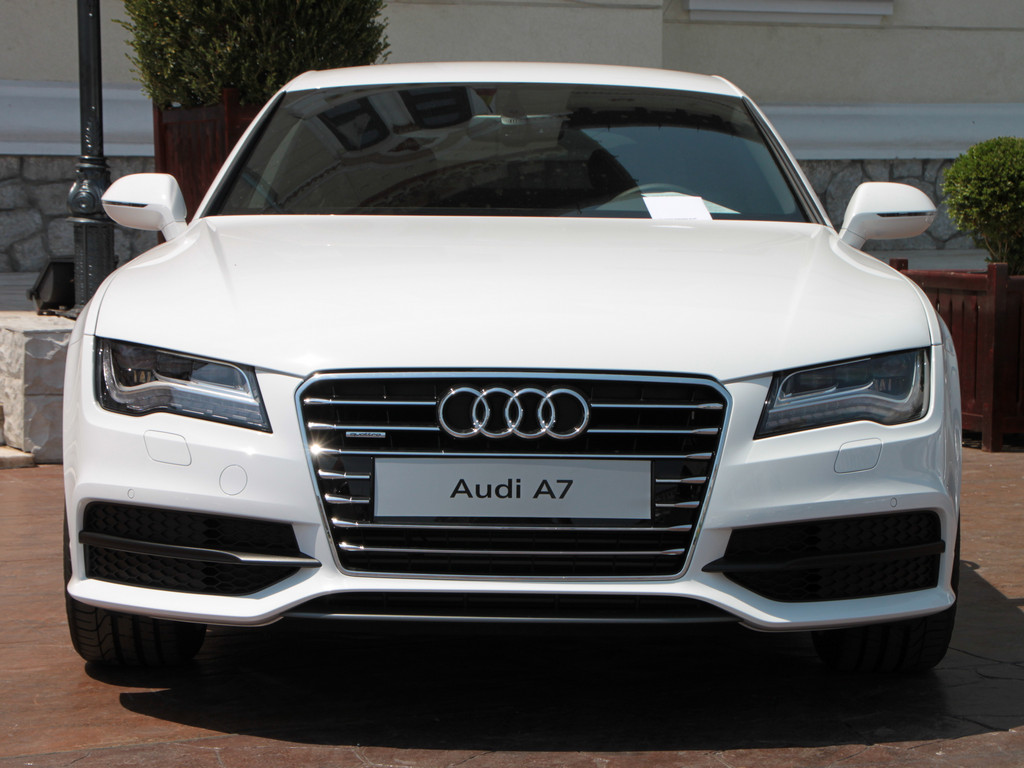
5. **Audi A7**
The Audi A7 stands out as a luxury sedan characterized by its distinctive sporty design, offering a sleek and stylish alternative to the more conventionally styled Audi A6. Its gracefully sloping roofline and integrated hatchback-style trunk provide a unique aesthetic that sets it apart, contributing to its bold and contemporary visual appeal. However, in line with many high-end luxury automobiles, the A7 experiences rapid depreciation, with a five-year depreciation rate of 57.2%.
One significant factor contributing to this depreciation is Audi’s reputation for both costly maintenance and somewhat unpredictable reliability. While the A7 undoubtedly delivers excellent performance and an array of high-end features, the long-term cost of ownership can be substantial. Many buyers, aware of these financial implications, prefer to purchase slightly used models, which have been observed to lose as much as 45.5% of their value in a mere three years. This makes a pre-owned A7 a more financially judicious choice than investing in a brand-new one.
Under the hood, the A7 is propelled by a turbocharged 3.0-liter V6 engine that generates a robust 335 horsepower and 369 lb-ft of torque. This engine is coupled with a precise seven-speed automatic transmission and Audi’s renowned Quattro all-wheel-drive system, which collectively ensure exceptional road grip and confident, stable handling in various conditions. The A7 is capable of accelerating from 0 to 60 mph in 5.2 seconds, establishing it as a capable performer, though it may not be the absolute fastest in its competitive class.
Audi offers the A7 across three distinct trim levels: Premium, Premium Plus, and Prestige. Even the base Premium model comes impressively equipped with luxurious amenities such as supple leather seats, heated front seats, a sophisticated three-zone climate control system, an intuitive dual-screen infotainment system, and comprehensive smartphone connectivity. Higher trim levels further enhance the luxury experience with features like a heads-up display, ventilated and massaging front seats, heated rear seats, and advanced driver-assist systems. Additionally, multiple upgrade packages are available, allowing buyers to further customize the vehicle to their specific preferences.
While the Audi A7 is undeniably a stylish and powerful luxury sedan, it does present certain drawbacks. Its distinctive sloping roofline, for example, can limit headroom for rear-seat passengers and potentially reduce rear visibility for the driver. Furthermore, Audi’s reliability can be inconsistent, and the associated repair costs are typically high. For those who desire a luxurious and sporty ride, a used A7 often represents the most advantageous route to secure a good deal without incurring the full price of a new vehicle.
Car Model Information: 2014 Audi A7 3.0 TDI Premium Plus
Name: Audi A7
Caption: Audi A7 S Line
Manufacturer: Audi
Class: Executive car
Production: 2010–present
Layout: ubl
Platform: Volkswagen Group MLB platform
Predecessor: Audi 100 Coupé S
Categories: 2020s cars, All-wheel-drive vehicles, All Wikipedia articles in need of updating, Articles with short description, Audi vehicles
Summary: The Audi A7 is an executive five-door liftback produced by Audi since 2010. The coupé variant of the Audi A6 saloon/estate, the Audi A7 features a sloping roofline with a steeply raked rear window and integrated boot lid (forming the Sportback), and four frameless doors. A sport version called the S7 has been made since 2012, and a high-performance model called the RS7 has been in production since 2013. An extended-wheelbase three-box, four-door saloon derivative called the A7L has been produced in China since 2021.
Get more information about: Audi A7
Buying a high-performing used car >>>
Brand: Audi Model: A7
Price: $17,865 Mileage: 149,631 mi.
Read more about: Investigating Car Wash Subscriptions: Uncovering Hidden Fees and Cancellation Nightmares
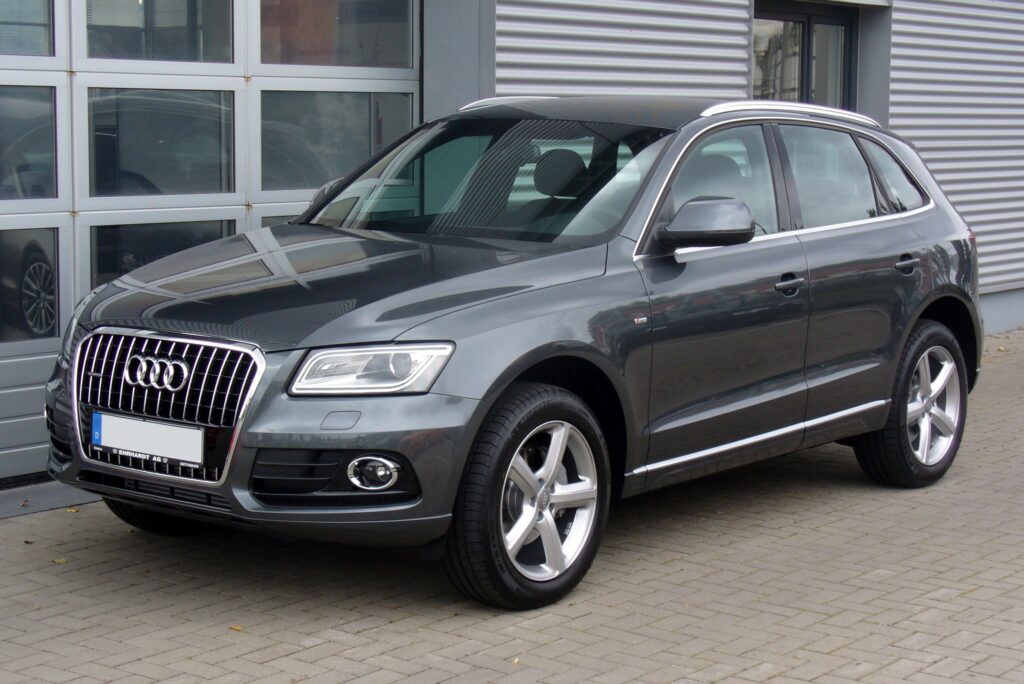
6. **Audi A6**
The Audi A6 is positioned as a high-end luxury sedan that shares a considerable number of its underlying components and characteristics with the Audi A7, yet it distinguishes itself with a more traditional and conventional design aesthetic. In contrast to the A7’s distinctive hatchback and sloping roofline, the A6 maintains a classic sedan profile. This design choice provides superior headroom for rear passengers and enhanced visibility, rendering it a more practical option for individuals who prioritize comfort and conventional utility. However, a trade-off for this design is a comparatively smaller cargo space, as it lacks the A7’s hatchback versatility.
Despite its refined driving dynamics and an array of premium features, the A6 consistently struggles with significant depreciation. Over a five-year period, it is estimated to lose approximately 56.3% of its original value. This substantial value erosion is primarily a consequence of its high initial purchase price, the considerable expense associated with its maintenance, and Audi’s reputation for only average reliability within the luxury segment. Consequently, many luxury car buyers often opt for brands perceived as more consistently reliable, such as BMW or Mercedes-Benz, which makes used A6 models a significantly more attractive financial proposition than purchasing them new.
Powering the Audi A6 are two engine options. The base offering is a turbocharged 2.0-liter four-cylinder engine that delivers 261 horsepower. For those seeking more robust performance, a turbocharged 3.0-liter V6 engine is available, producing a healthy 335 horsepower. Both engines are expertly paired with a seven-speed automatic transmission and feature Audi’s acclaimed Quattro all-wheel drive system, ensuring smooth, controlled handling and confident traction. The V6 model is the quicker of the two, accelerating from 0 to 60 mph in just 5.1 seconds, while the four-cylinder variant accomplishes the same sprint in 5.8 seconds. Both versions share a top speed of 130 mph.
The A6 is available in three distinct trim levels: Premium, Premium Plus, and Prestige. Even the entry-level Premium trim is well-appointed, featuring luxurious leather seats, heated front seats, expansive digital screens, seamless wireless smartphone connectivity, and an integrated GPS navigation system. Moving up to higher trims introduces additional premium amenities, such as dual-pane acoustic glass for enhanced cabin quietness, heated rear seats, and invigorating massaging front seats. Buyers are also afforded the opportunity to select from multiple optional packages to further customize their A6, although these upgrades will, naturally, contribute to the already high price point of the vehicle.
While the Audi A6 offers a stylish and comfortable luxury sedan experience, it is not without its drawbacks. Its reliability record is not considered stellar, and its resale value is notably weak. Furthermore, the trunk space, while adequate for some, is smaller when compared to certain competitors in its class. For discerning consumers seeking a premium driving experience at a reduced cost, a pre-owned A6 often represents the most intelligent and financially sound choice.
Car Model Information: 2012 Audi A6 3.0T Prestige Quattro
Name: Audi A6
Caption: 2025 Audi A6 Avant (C9)
Manufacturer: Audi AG
Production: 1994–present,2000–present (China)
Class: Executive car
BodyStyle: Sedan (car)
Layout: longitudinal engine,FF layout
Sp: uk
Predecessor: Audi 100
Categories: 2000s cars, 2010s cars, 2020s cars, All-wheel-drive vehicles, All Wikipedia articles written in British English
Summary: The Audi A6 is an executive car manufactured by the German company Audi since 1994. Now in its sixth generation, the successor to the Audi 100 is manufactured in Neckarsulm, Germany, and is available in saloon and estate configurations, the latter marketed by Audi as the Avant. Audi’s internal numbering treats the A6 as a continuation of the Audi 100 lineage, with the initial A6 designated as a member of the C4-series, followed by the C5, C6, C7, C8 and the C9. The related Audi A7 is essentially a Sportback (liftback) version of the C7-series and C8-series A6 but is marketed under its own separate identity and model designation.
All generations of the A6 have offered either front-wheel-drive or Torsen-based four-wheel-drive, marketed by Audi as their quattro system. The A6 has also been used as the basis for the company’s Allroad models since 1999.
Get more information about: Audi A6
Buying a high-performing used car >>>
Brand: Audi Model: A6
Price: $9,495 Mileage: 103,436 mi.
Read more about: Investigating Car Wash Subscriptions: Uncovering Hidden Fees and Cancellation Nightmares

7. **2021 Land Rover Discovery**
The 2021 Land Rover Discovery stands as a versatile luxury SUV that masterfully blends comfort, robust performance, and impressive off-road capabilities. It offers a smooth and composed driving experience on paved roads, while simultaneously excelling in challenging off-road conditions, making it an ideal choice for adventurous individuals seeking both luxury and utility. With a meticulously designed cabin adorned with high-quality materials, the Discovery consistently delivers a premium and sophisticated driving environment.
This SUV distinguishes itself not merely through its polished road manners but also by its substantial towing capacity and inherent power, making it an excellent option for those who require a comprehensive package of both opulent comfort and practical functionality. Its ability to navigate diverse terrains and handle heavy loads positions it uniquely within the luxury SUV segment.
The Discovery is powered by a 3.0-liter twin-turbocharged 6-cylinder mild-hybrid engine, which generates a considerable 355 horsepower and 369 lb-ft of torque. This potent engine is paired with an 8-speed automatic transmission and a robust 4WD driveline, collectively providing the SUV with formidable capability across a wide range of surfaces. Despite its substantial size, the Discovery maintains a respectable level of fuel efficiency, achieving 18 MPG in city driving and 24 MPG on the highway. One of its most compelling attributes is its impressive towing capacity, rated at 7,716 pounds, rendering it perfectly suited for hauling large loads or towing trailers or boats.
Despite its luxurious appointments and capable performance, the Land Rover Discovery does experience significant depreciation over its initial three years of ownership, reflected in a residual value of 56.07%. This depreciation rate can be a considerable concern for owners who plan to sell or trade in their vehicle within that timeframe. However, the Discovery’s rugged nature and multifaceted versatility may encourage owners to retain it for longer periods, particularly if they place a high value on its inherent ability to adapt to a wide variety of driving scenarios and demands.
Regarding its reliability, the Discovery does necessitate a certain level of maintenance. The estimated average yearly maintenance cost hovers around $719, and over the course of the first 10 years of ownership, consumers can anticipate spending approximately $17,034 on maintenance. With only one recall noted, the Discovery generally proves to be relatively reliable, though prospective buyers considering it for long-term ownership should factor in these maintenance expenses.
Continuing our in-depth examination of luxury vehicles that significantly depreciate, we turn our focus to additional models that, despite their initial appeal and advanced features, prove to be less-than-stellar investments for owners. This section delves into how reliability concerns, the swift march of technological obsolescence, and the substantial long-term ownership costs impact the resale value of these premium automobiles. For consumers, understanding these trends is paramount, whether they are navigating the new car market or seeking advantageous opportunities in the pre-owned segment.
Car Model Information: 2019 Subaru Forester Premium
Sp: uk
Name: Land Rover Discovery
Caption: 2018 Land Rover Discovery
Manufacturer: Land Rover Ltd.,Jaguar Land Rover
Production: 1989–present
Class: Executive car,Sport utility vehicle
Layout: Front-engine, four-wheel-drive
Categories: All-wheel-drive vehicles, All Wikipedia articles written in British English, All articles lacking reliable references, All articles with unsourced statements, Articles lacking reliable references from December 2010
Summary: The Land Rover Discovery is a series of five or seven-seater family SUVs, produced under the Land Rover marque, from the British manufacturer Land Rover, and later Jaguar Land Rover. The series is currently in its fifth iteration (or generation, according to the manufacturer), the first of which was introduced in 1989, making the Discovery the first new model series since the launch of the 1970 Range Rover – on which it was based – and only the third new product line since the conception of the Land Rover (vehicle and brand) by Rover in 1948. The model is sometimes called influential, as one of the first to market a true off-road capable family car.
Although the Range Rover had originally been designed as an everyday four wheel drive car that could be used as both a utility vehicle and a family car, it had progressively moved upmarket through its life to evolve into a luxury vehicle sold at a much higher price point. The Discovery was intended to fulfill the role the Range Rover originally was intended for; a segment which was now dominated by Japanese rivals such as the Nissan Patrol, Mitsubishi Pajero and Toyota Land Cruiser. Although positioned below the Range Rover in the company’s line-up, the vehicle was both longer and higher, offered more room in the back, and optionally also more seats. Space utilization became more sophisticated in later generations, but the series keeps offering seats for seven occupants. Despite originally being sold as an affordable alternative to the Range Rover, the Discovery has also progressively moved upmarket through its successive generations to become a bonafide luxury SUV.
The second Discovery (1998) was called the Series II, and although it featured an extended rear overhang, it was otherwise an extensive facelift, which carried over the 100 in (2,540 mm) wheelbase frame and rigid, live front and rear axles derived from the original Range Rover.
The third generation – succeeding the Series II in 2004 – was either called the Discovery 3 or simply LR3 (in North America and the Middle East). This was a new ground up design, the first all-original design for the Discovery. Although it followed the 2002 third generation Range Rover, also switching to fully independent suspension, it still received a separate, but integrated body and frame (IBF) structure. The fourth generation, as of 2009 – like the series II, was again mainly an update of the new generation – marketed as the Discovery 4, or Land Rover LR4 for North American and Middle Eastern markets.
The fifth generation of the Discovery, introduced in 2017, no longer sports a numeric suffix. Unlike the previous two generations, it now benefits from a unitized body structure, making it lighter than its predecessor.
Get more information about: Land Rover Discovery
Buying a high-performing used car >>>
Brand: Land Rover Model: Discovery
Price: $21,123 Mileage: 53,226 mi.
Read more about: A Costly Lesson Learned: 15 New Cars Buyers Would “Unbuy” to Escape Terrible Fuel Economy
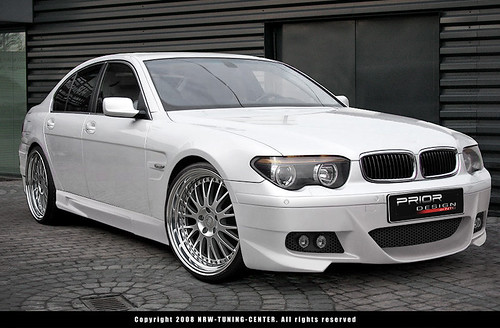
8. **BMW 5 Series**
The BMW 5 Series stands out as a highly versatile model within the brand’s extensive lineup, striking a commendable balance between spaciousness and a dynamically engaging driving experience. Its interior is sufficiently accommodating for adult passengers, ensuring comfort on longer journeys, while its performance characteristics maintain the sporty feel BMW is renowned for. With a starting price positioned just under $60,000, it offers a relatively accessible entry point into the luxury mid-size sedan segment.
However, the current market landscape presents challenges for sedans, as SUVs and crossovers increasingly dominate consumer preferences. This shift, coupled with BMW’s established reputation for high maintenance costs and reliability ratings that are often considered average, contributes to the 5 Series’ depreciation rate being faster than many of its direct competitors. For original owners, this means a quicker decline in resale value.
Inside, the 5 Series is comprehensively equipped with contemporary technology and an array of comfort-enhancing features. The base model, even at its initial price point, includes synthetic leather seats, heated front seats, a large infotainment display, a digital driver’s instrument cluster, GPS navigation, and a high-quality sound system. It also integrates several driver-assist and safety features, bolstering its appeal as a practical luxury sedan.
Despite its strong feature set, many desirable premium amenities, such as the most advanced driver aids and the highest-grade luxury materials, are exclusively available as expensive optional add-ons. This approach necessitates that buyers aiming for the fully equipped versions will incur a significantly higher total cost, further impacting its value retention in the long term. This customization, while offering flexibility, adds to the financial burden.
One of the most compelling aspects of the 5 Series lies in its extensive customization options, allowing buyers to tailor the vehicle to their precise needs and preferences through numerous optional packages and standalone features. While this flexibility enhances its appeal, it also contributes to the overall cost. For those budget-conscious buyers, it offers a pathway to a well-equipped car without necessarily overspending on features they may not require.
Car Model Information: 2019 Subaru Forester Premium
Name: BMW 5 Series
Manufacturer: BMW
Production: 1972–present
Class: Executive car
BodyStyle: Sedan (automobile)
Layout: Front-engine, rear-wheel-drive,Front-engine, all-wheel-drive
Predecessor: BMW New Class
Categories: 1980s cars, 1990s cars, 2000s cars, 2010s cars, 2020s cars
Summary: The BMW 5 Series is an executive car manufactured and marketed by BMW since 1972. It is the successor to the BMW New Class sedans and is currently in its eighth generation. The car is sold as either a sedan or, since 1991, a station wagon (marketed as “Touring”). A 5-door fastback (marketed as “Gran Turismo”) was sold between 2009 and 2017. Each successive generation has been given an internal G-code designation since 2017. Previously, a F-code designation was used between 2010 and 2016, while an E-code designation was used between 1972 and 2010. These are used to distinguish each model and generation from each other.
The first generation of the 5 Series was powered by naturally aspirated four-cylinder and six-cylinder petrol engines. Following generations have been powered by four-cylinder, six-cylinder, V8 and V10 engines that are either naturally aspirated or turbocharged. Since 1982, diesel engines have been included in the 5 Series range.
The 5 Series is BMW’s second-best-selling model after the 3 Series. On 29 January 2008, the 5 millionth 5 Series was manufactured, a 530d sedan in Carbon Black Metallic. It is BMW’s oldest nameplate still in production and the first model line to use “Series” in the name, debuting the three-digit model naming convention still used today. Since the E28, all generations of 5 Series have included an “M” model, called the BMW M5.
Get more information about: BMW 5 Series
Buying a high-performing used car >>>
Brand: BMW Model: 5 Series
Price: $21,123 Mileage: 53,226 mi.
Read more about: Nightmare in the Driveway: 10 SUVs Dealers Say They Can’t Move Due to Lingering Issues
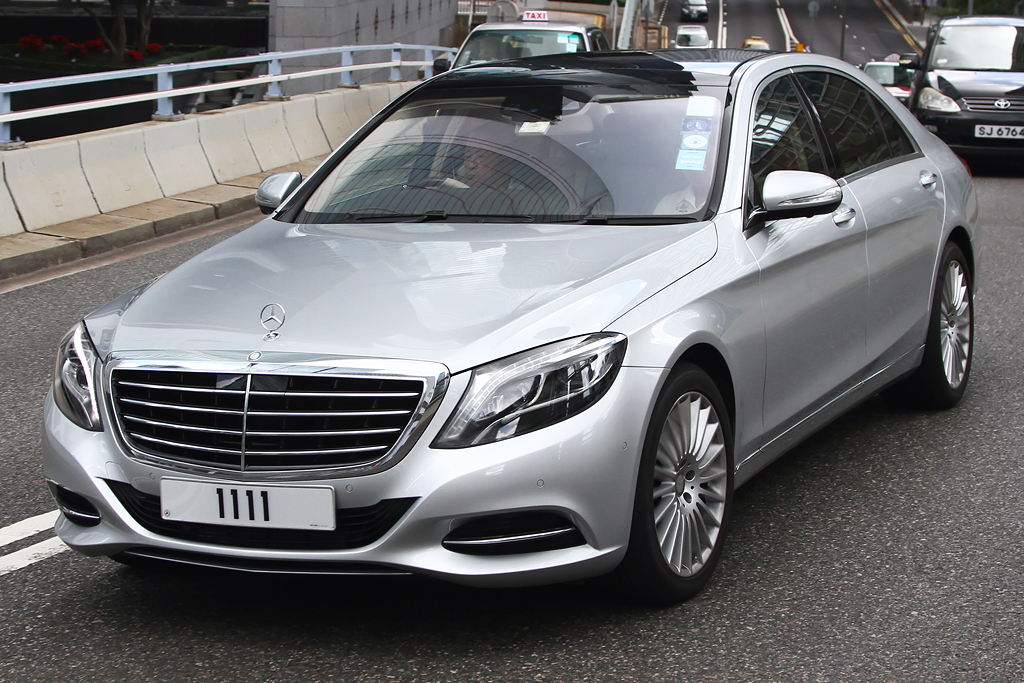
9. **Mercedes-Benz S-Class**
The Mercedes-Benz S-Class exemplifies the pinnacle of luxury within the brand’s sedan offerings, consistently featuring an opulent suite of high-end amenities, cutting-edge technology, and unparalleled comfort. However, its formidable starting price, exceeding $118,000, places it among the most expensive choices in a market where a growing number of consumers are seeking more financially accessible alternatives. This positioning makes it a significant investment.
Despite its steep financial outlay, the S-Class continues to draw buyers who prioritize an uncompromising luxury experience, finding its unmatched comfort, revolutionary technology, and elegant road presence to be worth every penny. It delivers an executive-level driving and riding experience that few other sedans can genuinely rival, solidifying its status as a luxury benchmark.
Consistent with many ultra-expensive luxury automobiles, the S-Class experiences rapid value depreciation shortly after purchase. It is not uncommon for its value to diminish by over 40 percent within just three years, rendering it a less-than-ideal asset for those prioritizing long-term value retention. This steep depreciation can be a stark reality for initial buyers.
This rapid depreciation, however, creates an attractive market for pre-owned S-Class models. Savvy buyers can often find well-equipped, lightly used versions at prices that are more than 30 percent below the original Manufacturer’s Suggested Retail Price (MSRP). The used market thus becomes an excellent avenue for acquiring a nearly new S-Class at a considerably more reasonable and appealing price point.
Even the entry-level S-Class models are lavishly appointed with premium features. The Luxury trim, for instance, includes sumptuous leather seats that offer heating, ventilation, and massage functions, alongside wireless charging capabilities, adaptive air suspension, and a comprehensive suite of advanced driver assistance systems. Higher trims, such as the Pinnacle and AMG, elevate the luxury experience further with amenities like heated and ventilated rear seats, rear-seat wireless charging, rear-axle steering for enhanced maneuverability, and an ultra-premium sound system. This ensures that every S-Class variant provides an exceptionally comfortable and refined experience.
Read more about: The Resale Reality Check: 14 Cars That Plummeted in Value After Just Five Years
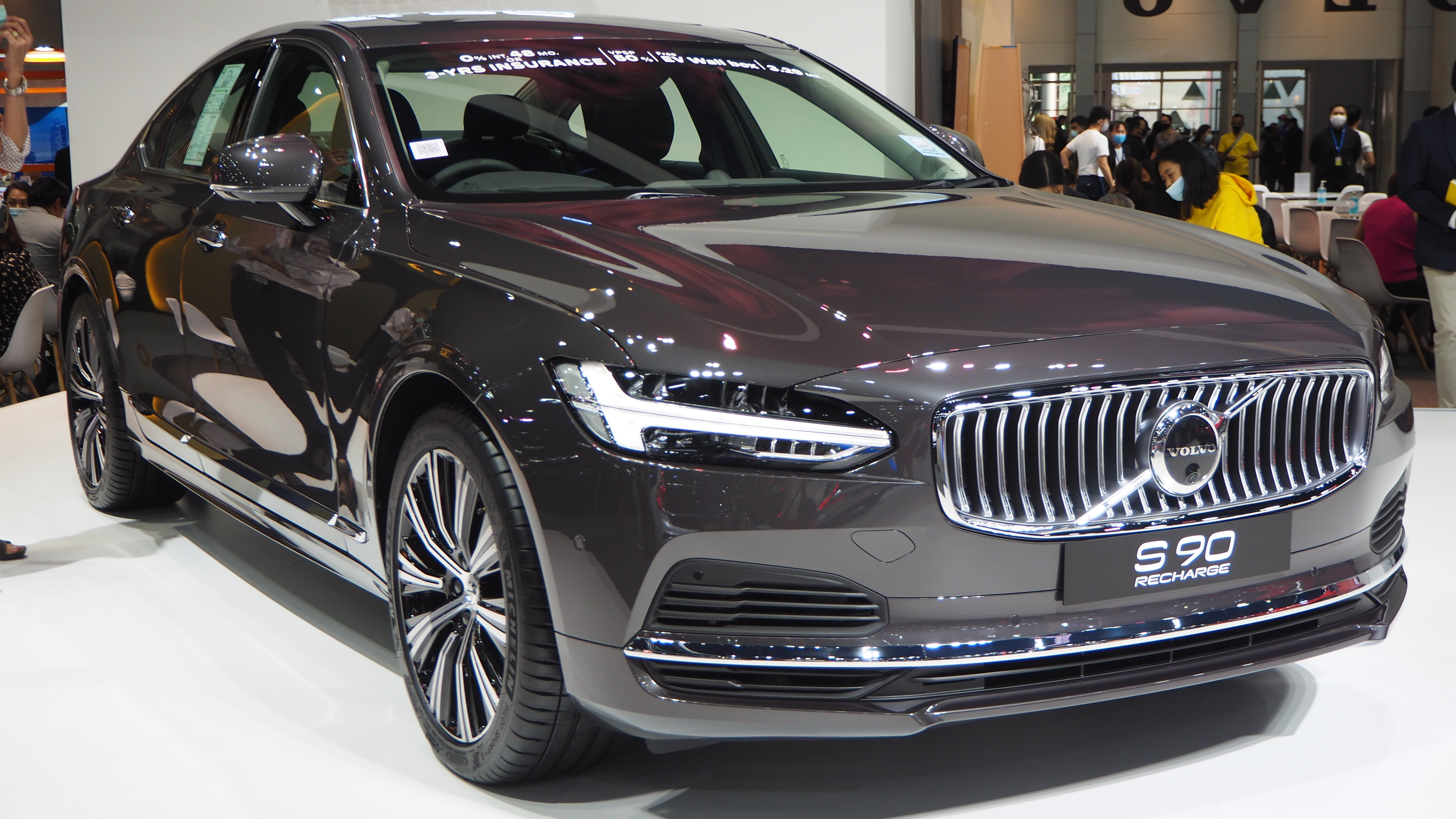
10. **Volvo S90**
The Volvo S90 represents a distinct vision of Swedish luxury, characterized by its elegant design philosophy and an unwavering commitment to safety. However, Volvo’s luxury market standing is not as robust as that of established German rivals like Mercedes-Benz or BMW, and its reliability ratings, which are often considered average, do not aid its value retention. These factors contribute to a significant drop in its market worth.
The S90 experiences a substantial loss of more than half its original value over a five-year period, translating to an estimated financial loss of approximately $35,365 for the owner. With a starting price nearing $60,000, this considerable depreciation transforms it into a much more financially accessible option in the used car market, particularly appealing to buyers who prioritize safety features and modern technology.
The most recent iteration of the Volvo S90 offers two distinct engine configurations. The standard B6 model is equipped with a turbocharged 2.0-liter four-cylinder engine, generating a robust 295 horsepower and 310 lb-ft of torque. For those seeking enhanced performance and efficiency, the T8 plug-in hybrid version delivers an impressive 455 horsepower and 523 lb-ft of torque. Both powertrains are seamlessly mated to an eight-speed automatic transmission and feature standard all-wheel drive, ensuring confident handling in various conditions.
In terms of acceleration, the B6 model can achieve 0-60 mph in 6.2 seconds, while the more potent T8 variant significantly reduces this time to 4.6 seconds. Despite its capable performance, the gasoline-only version often struggles to compete effectively with other luxury sedans in its segment that offer more engaging driving dynamics. This can be a point of consideration for performance-oriented buyers.
Volvo offers the S90 in two primary trim levels, with both powertrain options available across both trims. The entry-level Plus trim comes generously equipped with high-end features, including four-zone climate control, premium leather upholstery, heated front and rear seats, and an advanced Google-based infotainment system that provides seamless connectivity. The S90 also distinguishes itself with an extensive array of safety features, incorporating numerous driver-assist technologies, a hallmark of the Volvo brand’s safety reputation.
However, despite its strong emphasis on safety advancements, often surpassing competitors in this area, the brand’s comparatively lower desirability in the highly competitive luxury market and a somewhat limited trunk space contribute to it being a less attractive option for certain segments of buyers. The S90 is an excellent choice for individuals who value safety, advanced technology, and a sophisticated design. The plug-in hybrid model further enhances its practicality through superior fuel economy, making it a viable option for environmentally conscious consumers.
Car Model Information: 2022 Volvo S90 B6 Inscription
Name: Volvo S90
Caption: 2018 Volvo S90 (US)
Manufacturer: Volvo Cars
Production: 2016–2024 (United States, Australia, Canada, Europe, and India),2016–present (Middle East, China, and several other Asian countries)
ModelYears: 2017–2025 (United States, Australia, Canada, Europe, and India),2017–present (Middle East, China, and several other Asian countries)
Assembly: ubl
Designer: Thomas Ingenlath,Örjan Sterner (Exterior),Tisha Johnson (Interior)
Class: Executive car
BodyStyle: Sedan (car)
Layout: Front-engine, front-wheel-drive layout,front-wheel drive
Platform: Volvo Scalable Product Architecture platform
Related: Volvo V90,Polestar 1,Volvo XC90#second
Engine: Petrol:,Straight-four engine,(140kW–235kW),Diesel:,Straight-four engine,(140kW–173kW),Hybrid:,Straight-four engine,(234kW–235kW + 64kW)
Motor: Permanent-magnet synchronous motor,34 kW
Abbr: on with mirrors
Transmission: Manual transmission,6-speed M76 manual,Aisin Seiki
Drivetrain: Plug-in hybrid,Mild Hybrid
Battery: {{val,9.2,u=kWh,lithium-ion battery
ElectricRange: 45 km
Wheelbase: convert
Length: S90: {{convert,4963,mm,in,1,abbr=on
Width: {{convert,1890,mm,in,1,abbr=on
Height: convert
Weight: convert
Predecessor: Volvo S80#Second generation (2006–2016)
Successor: Volvo ES90
Sp: uk
Categories: All-wheel-drive vehicles, Articles with short description, CS1 Chinese-language sources (zh), CS1 Finnish-language sources (fi), CS1 German-language sources (de)
Summary: The Volvo S90 is an executive sedan manufactured and marketed by Swedish automaker Volvo Cars from 2016. Its estate variant is called the Volvo V90.
Get more information about: Volvo S90
Buying a high-performing used car >>>
Brand: Volvo Model: S90
Price: $29,977 Mileage: 53,690 mi.
Read more about: Expert Picks: The 10 Best Road Trip Cars for 2024 & 2025, Thoroughly Reviewed for Your Next Adventure
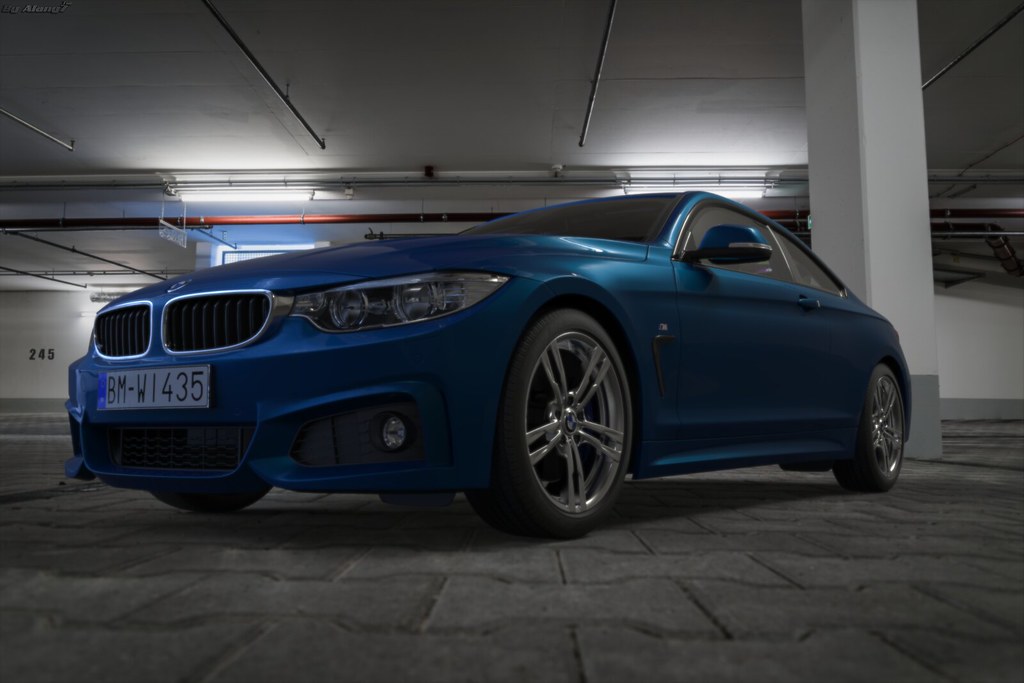
11. **BMW 3 Series**
The BMW 3 Series maintains its status as a consistently popular choice for consumers seeking a compact luxury sedan that masterfully blends refined comfort with a distinct sporty edge. It is highly regarded for its exceptional road performance and precise, sharp handling, which collectively contribute to an enjoyable driving experience in a variety of everyday scenarios. While its initial starting price is considered reasonable when compared to other luxury vehicles in its class, its long-term value retention is adversely affected by BMW’s reputation for high maintenance costs and reliability that is often rated as below average. This makes it a financially less stable long-term investment.
However, this depreciation trend positions the 3 Series as a compelling option for buyers in the used car market who are looking for a luxury sports sedan at a more accessible price point. The opportunity to acquire a premium driving machine with a significant discount appeals to those who prioritize driving dynamics over strict resale value. It offers a gateway to BMW ownership without incurring the full burden of initial depreciation.
The 3 Series is available with a choice of two potent engine options. The base model, designated as the 330i, features a turbocharged 2.0-liter four-cylinder engine that delivers 255 horsepower and 295 lb-ft of torque. For those desiring a more exhilarating performance, the M340i model comes equipped with a turbocharged 3.0-liter six-cylinder engine, producing an impressive 386 horsepower and 369 lb-ft of torque. Both engine configurations are paired with an efficient eight-speed automatic transmission.
Both models offer rear-wheel drive as standard, with the option for BMW’s intelligent all-wheel-drive system. Performance figures are robust: the 330i accelerates from 0-60 mph in 5.4 seconds, while the M340i achieves this sprint in a considerably quicker 4.1 seconds. Both versions share an electronically limited top speed of 155 mph, affirming their sporty credentials and making them engaging to drive for enthusiasts.
The BMW 3 Series is available across two primary trims: the 330i and the M340i. The 330i, even as the base model, comes equipped with high-quality features such as three-zone automatic climate control, synthetic leather seats, power-adjustable front seats and mirrors, a modern curved digital display, and a suite of essential driver-assist features. The M340i elevates the experience further by incorporating sportier elements, including an aerodynamic M Sport body kit, M Sport suspension for enhanced handling, and its more powerful engine. Additionally, numerous optional upgrade packages are available, allowing buyers to customize the vehicle to their specific preferences, though these add-ons can swiftly increase the overall purchase price.
While the BMW 3 Series offers a refined, stylish, and high-performing luxury sedan experience, it is important to acknowledge its inherent downsides. BMW’s documented reliability issues and the associated expensive maintenance costs contribute to a higher overall cost of ownership. Furthermore, many advanced safety and driver-assist features are not included as standard equipment, requiring additional investment. For discerning buyers who seek a luxurious yet sporty sedan but wish to avoid paying the full price of a new vehicle, a pre-owned BMW 3 Series often presents a financially astute choice, balancing performance with value.
Car Model Information: 2019 Subaru Forester Premium
Name: BMW 3 Series
Manufacturer: BMW
Production: 1975–present
Class: Compact executive car
Predecessor: BMW 02 Series
Categories: 1970s cars, 1980s cars, 1990s cars, 2000s cars, 2010s cars
Summary: The BMW 3 series is a line of compact executive cars manufactured by the German automaker BMW since May 1975. It is the successor to the 02 series and has been produced in seven generations.
The first generation of the 3 Series was only available as a 2-door saloon; the model range expanded to include a 4-door saloon, 2-door convertible, 2-door coupé, 5-door estate, 5-door liftback (“Gran Turismo”; discontinued in 2019) and 3-door hatchback body styles. Since 2013, the coupé and convertible models have been marketed as the 4 Series; these styles no longer being included in the 3 Series.
The 3 Series is BMW’s best-selling model line, accounting for around 30% of the BMW brand’s annual total car sales, and has won numerous awards throughout its history. The M version of the 3 series, M3, debuted with the E30 M3 in 1986.
Get more information about: BMW 3 Series
Buying a high-performing used car >>>
Brand: BMW Model: 3 Series
Price: $21,123 Mileage: 53,226 mi.
Read more about: Nightmare in the Driveway: 10 SUVs Dealers Say They Can’t Move Due to Lingering Issues
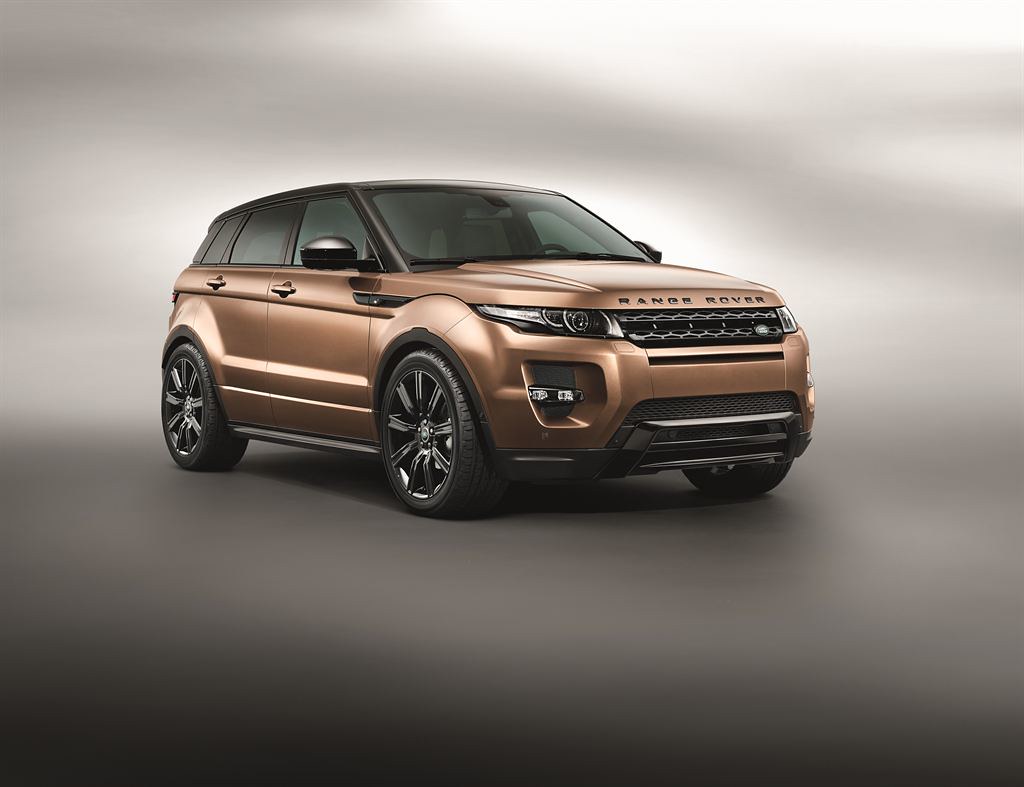
12. **Land Rover Range Rover**
Financial data consistently positions the Land Rover Range Rover at the forefront of luxury SUV depreciation charts, revealing a staggering total ownership cost that can reach an astonishing $155,447 over a five-year period. This substantial financial outlay is heavily influenced by the vehicle’s rapid depreciation, particularly within its first year of ownership, which strikes particularly hard. While its distinctive floating roof and clean body lines undoubtedly establish a commanding presence and turn heads at valet stands, these aesthetic elements do little to preserve its market value.
Prospective buyers must recognize that while the Range Rover commands attention, the financial reality of ownership includes significant value loss. First owners absorb the heaviest financial impact, and the technology that makes this SUV exceptional today can become merely expected tomorrow. You might relish the attention this SUV garners, but be prepared for a sobering financial truth when newer Range Rovers park beside yours just a few years later.
Range Rover cabins are renowned for showcasing British luxury, yet historical resale values unfortunately do not support the financial investment they represent. Premium materials, including real wood, metal trim, and sumptuous leather, adorn nearly every surface, extending even to secondary touch points. The commanding seating position provides excellent visibility, while dual touchscreens seamlessly handle all vehicle functions, creating an environment of sophisticated control.
However, what feels exceptionally special when new can quickly become commonplace, and more critically, prone to electronic gremlins. These emerging issues leave owners facing repair bills that frequently exceed the vehicle’s rapidly diminishing market value. The bitter irony of luxury depreciation means that a meticulously maintained interior with every conceivable option often commands barely more than a base model with similar mileage upon trade-in.
This discrepancy between perceived luxury and actual long-term value underscores a critical consideration for Range Rover owners. While the initial experience is undeniably premium, the substantial ownership costs and the swift devaluation make it a challenging investment for those prioritizing financial retention. Smart buyers understand that the Range Rover, despite its allure, demands a significant premium for the privilege of its initial luxury.
Car Model Information: 2019 Subaru Forester Premium
Caption: 2022 Range Rover SE P440e (L460, fifth generation, United Kingdom)
Aka: unbulleted list
Name: Range Rover
Manufacturer: unbulleted list
Production: 1969–present
Assembly: unbulleted list
Class: unbulleted list
Layout: Front-engine, four-wheel-drive layout
Sp: uk
Categories: 1980s cars, 1990s cars, 2000s cars, 2010s cars, 2020s cars
Summary: The Land Rover Range Rover, generally shortened to Range Rover, is a 4WD luxury mid to full size crossover marque and sub-brand of Jaguar Land Rover, owned by India-based Tata Motors. The Range Rover line was launched in 1970 by British Leyland and since 2022 is in its fifth generation.
Additional models have been launched under the Range Rover name, including the Range Rover Sport, Range Rover Evoque, and Range Rover Velar.
Get more information about: Range Rover
Buying a high-performing used car >>>
Brand: Land Rover Model: Range Rover
Price: $21,123 Mileage: 53,226 mi.
Read more about: Marilyn Monroe: A Reassessment of a Life Defined by Stardom, Struggle, and Enduring Iconography
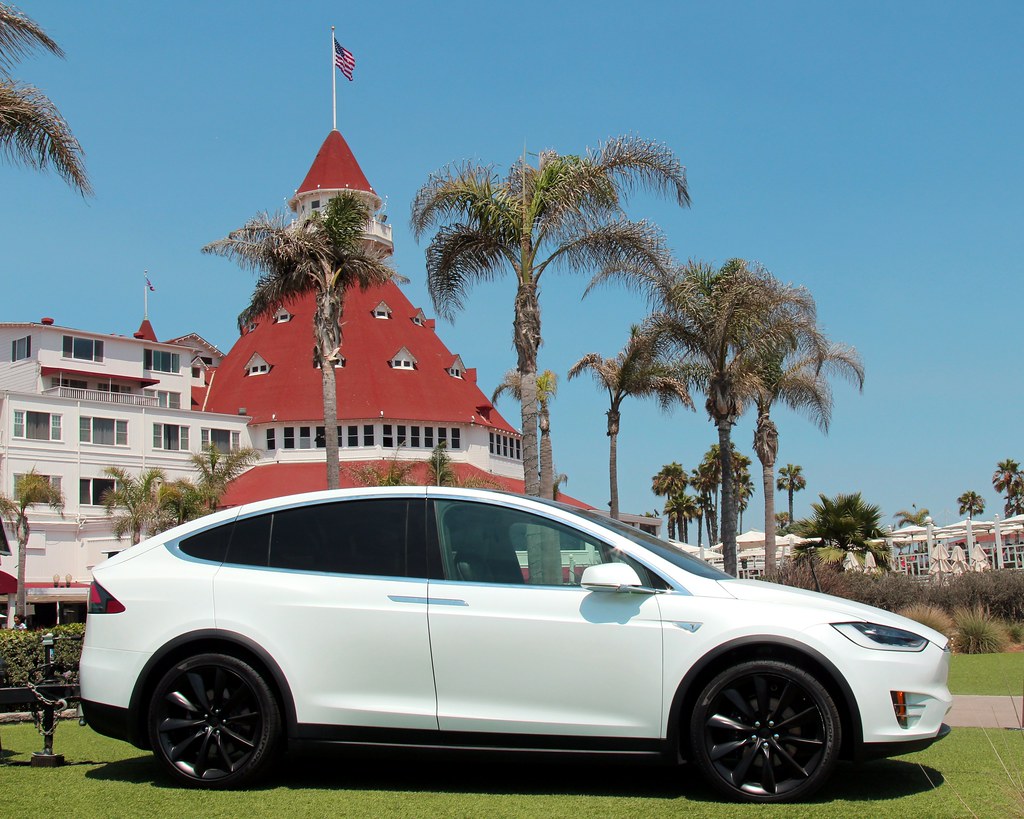
13. **Tesla Model X**
Even electric innovation, often touted as forward-looking, provides no immunity against the Tesla Model X’s significant devaluation curve. This distinctive Tesla model is characterized by its attention-grabbing falcon-wing doors, which not only provide unique access to the rear seats but also create an unmistakable and futuristic profile on the road. The clean exterior surfacing contributes to an impressive 0.24 drag coefficient, enhancing its range without, however, preserving its long-term market value. Owners often discover that while Tesla generously provides over-the-air updates, it simultaneously diminishes resale value.
This rapid depreciation occurs as what was once considered a “future-proof” vehicle can surprisingly become dated when newer battery technology and more advanced charging standards emerge, rendering earlier hardware less desirable. The relentless pace of technological advancement in the EV sector means that pioneering models often bear the brunt of early adoption, making them less valuable in the used market as newer, more efficient iterations arrive. This can be a frustrating reality for early adopters.
The minimalist design philosophy unequivocally defines the Model X interior, yet steep depreciation simultaneously characterizes its ownership costs. A massive 17-inch touchscreen dominates the dashboard, effectively eliminating nearly all physical controls and centralizing all vehicle functions. The panoramic windshield extends seamlessly into the roof structure, offering an expansive view of the surroundings. Interior configurations allow for six or seven occupants, depending on the preferred middle-row seating arrangement.
Despite ongoing software updates that keep the interface current and fresh, the underlying hardware components tend to age with less grace. This leaves early adopters inadvertently funding the development of technology that second and third owners subsequently enjoy at a fraction of the original price. The long-term financial implications mean that while the car feels advanced upon purchase, its unique features and evolving tech landscape can quickly erode its value.
For consumers considering a Model X, it is crucial to weigh the allure of its distinctive design and cutting-edge features against the realities of its depreciation. While it offers a unique driving experience and impressive performance, the financial trajectory suggests that buying a slightly used model might represent a more financially prudent decision. This approach allows buyers to enjoy much of the innovation without enduring the steepest part of the depreciation curve, which is often absorbed by the first owner.
Car Model Information: 2019 Subaru Forester Premium
Name: Tesla Model X
Manufacturer: Tesla, Inc.
Production: 2015–present
Assembly: unbulleted list
Designer: Franz von Holzhausen
Class: Crossover (automobile)
BodyStyle: 5-door SUV
Layout: unbulleted list
Doors: unbulleted list
Related: Tesla Model S
Motor: unbulleted list
Title: Discontinued
Transmission: unbulleted list
Battery: unbulleted list
ElectricRange: FTP-75
Wheelbase: cvt
Length: cvt
Width: cvt
Height: cvt
Weight: unbulleted list
Sp: us
Categories: 2020s cars, All Wikipedia articles in need of updating, All Wikipedia articles written in American English, All articles containing potentially dated statements, All articles lacking reliable references
Summary: The Tesla Model X is a battery electric mid-size luxury crossover SUV built by Tesla, Inc. since 2015. Developed from the full-sized sedan platform of the Tesla Model S, the vehicle uses distinctive falcon wing doors for rear passenger access.
The Model X has an EPA size class as an SUV, and shares around 30 percent of its content with the Model S, half of the originally planned 60 percent, and weighs about 10 percent more. Both the Model X and Model S are produced at the Tesla Factory in Fremont, California. The prototype was unveiled at Tesla’s design studios in Hawthorne, California, on February 9, 2012. First deliveries of the Model X began in September 2015. After one full year on the market, in 2016, the Model X ranked seventh among the world’s best-selling plug-in cars. A refresh of the Tesla Model X was introduced in 2021, offering a new “Plaid” performance model, along with a revised interior, powertrain, and suspension.Another update of the Model X was introduced in June 2025 with a new front bumper camera, new wheel designs, increased third-row space, dynamic ambient lighting, and adaptive headlights. The updates are similar to the Model S, which was updated at the same time.
As of July 2025, the Model X is available as a Long-Range version with an estimated EPA range of 352 miles (566 km) and a high performance “Plaid” version with an estimated EPA range of 335 miles (539 km).
Get more information about: Tesla Model X
Buying a high-performing used car >>>
Brand: Tesla Model: Model X
Price: $21,123 Mileage: 53,226 mi.
Read more about: 15 Trucks Owners Wish They Never Bought: Unpacking the Crippling Costs and Regrets
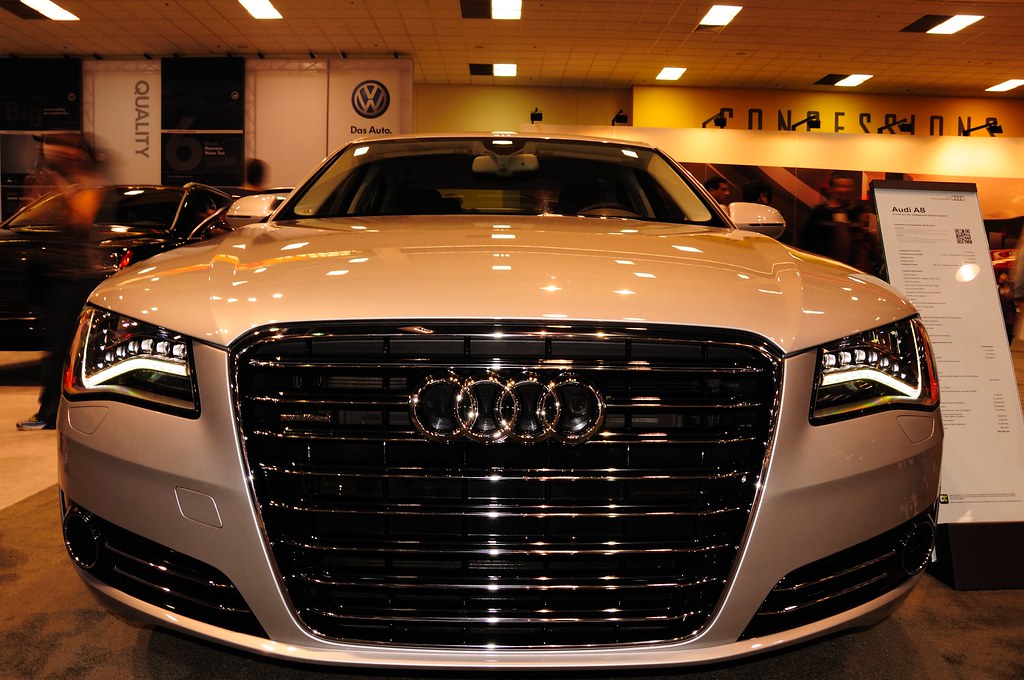
14. **Audi A8**
German engineering excellence, as embodied by the Audi A8 luxury sedan, regrettably follows the established pattern of significant luxury depreciation. Its restrained styling employs subtle character lines rather than dramatic flourishes, presenting an elegant and understated aesthetic. The aluminum-intensive construction is notable, reducing the vehicle’s weight by 58 pounds compared to its predecessor, which contributes to improved driving dynamics and efficiency. Standard HD Matrix LED headlights provide advanced illumination with distinctive light signatures, underscoring its sophisticated design. However, even Audi’s famously timeless design language proves insufficient to overcome market mathematics.
The sophisticated technology that renders this sedan exceptional today invariably becomes merely expected tomorrow, leaving original owners to bear the brunt of the depreciation bill. This phenomenon is a common thread among high-end luxury vehicles, where rapid advancements and shifting consumer expectations quickly diminish the perceived value of yesterday’s innovations. For original buyers, this translates into a substantial financial loss as the vehicle ages, regardless of its initial cutting-edge features.
Technical refinement permeates the A8’s cabin, a stark contrast to the consistent erosion of its market value outside. Dual touchscreens are integrated seamlessly, incorporating haptic feedback to provide tactile confirmation with each input, enhancing user interaction. Acoustic glass is meticulously employed throughout, creating a remarkably quiet and serene environment at any speed, a hallmark of luxury comfort. Premium seating options, particularly in upper trims, include an impressive 18 separate pneumatic cushions in each front seat, offering unparalleled adjustability and support.
However, these engineering marvels, while impressive, eventually have the potential to become maintenance nightmares. The replacement costs for failed air bladders, which are integral to the advanced seating, and the repair of complex massage mechanisms can be prohibitively expensive. These costs often prompt second owners to simply endure non-functioning comfort features rather than invest in costly repairs. This reality underscores the long-term financial commitments associated with owning such a technologically advanced luxury vehicle.
Car Model Information: 2025 Audi A8 L 55
Name: Audi A8
Manufacturer: Audi AG
Assembly: Neckarsulm
Production: #D2
Class: Full-size,luxury car
BodyStyle: sedan (automobile)
Platform: List of Volkswagen Group platforms
Layout: FF layout
Related: Audi S8
Predecessor: Audi V8
Categories: 2000s cars, 2010s cars, 2020s cars, All-wheel-drive vehicles, All articles lacking reliable references
Summary: The Audi A8 is a full-size luxury sedan manufactured and marketed by the German automaker Audi since 1994. Succeeding the Audi V8, and now in its fourth generation, the A8 has been offered with either front- or permanent all-wheel drive and in short- and long-wheelbase variants. The first two generations employed the Volkswagen Group D platform, with the current generation deriving from the MLB platform. After the original model’s 1994 release, Audi released the second generation in late 2002, the third in late 2009, and the fourth and current iteration in 2017. Noted as the first mass-market car with an aluminium chassis, all A8 models have used this construction method co-developed with Alcoa and marketed as the Audi Space Frame.
A mechanically upgraded, high-performance version of the A8 debuted in 1996 as the Audi S8. Produced exclusively at Audi’s Neckarsulm plant, the S8 is fitted standard with Audi’s quattro all-wheel drive system. The S8 was only offered with a short-wheelbase for the first three generations, being joined by a long-wheelbase variant for the fourth generation.
Get more information about: Audi A8
Buying a high-performing used car >>>
Brand: Audi Model: A8
Price: $76,711 Mileage: 935 mi.
Read more about: Marilyn Monroe: A Reassessment of a Life Defined by Stardom, Struggle, and Enduring Iconography
Understanding which luxury vehicles experience the most severe depreciation is more than just a matter of curiosity; it is a critical insight for informed decision-making in the automotive market. Whether you are a prospective buyer captivated by the allure of a high-end vehicle or an existing owner contemplating your next move, the data consistently reveals that brand reputation, technological advancement, and long-term maintenance costs are pivotal in determining a vehicle’s value retention. For many, the dream of luxury ownership can be realized more judiciously by exploring the robust opportunities within the pre-owned market, allowing for the enjoyment of premium features without bearing the heaviest burden of initial and rapid depreciation. This approach empowers consumers to make smarter financial choices, securing exceptional vehicles at a fraction of their original cost, and transforming what might be a financial pitfall for some into a savvy acquisition for others. The takeaway is clear: informed research is the ultimate luxury.


